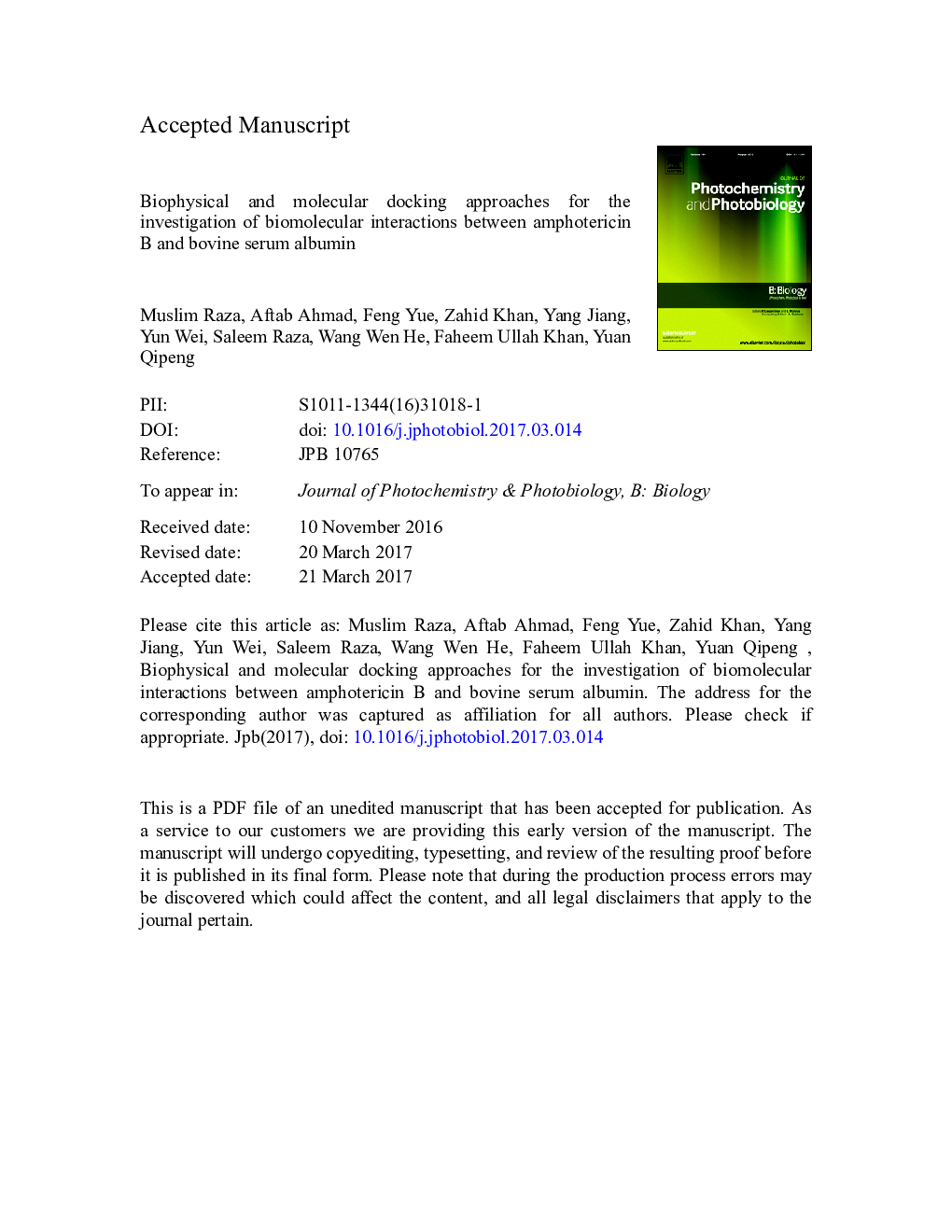| Article ID | Journal | Published Year | Pages | File Type |
|---|---|---|---|---|
| 4754458 | Journal of Photochemistry and Photobiology B: Biology | 2017 | 45 Pages |
Abstract
Exogenous drug as an antidote to treat various infections get absorbed in the blood circulatory system of a human can directly contact with transporter proteins such as serum albumin. Therefore, for rational drug discovery, understanding the biomolecular interaction between drugs and protein is highly important. In this contribution, we describe the possible interactions between an antifungal drug Amphotericin B (AmB) and Bovine Serum Albumin (BSA) using multi-spectroscopic techniques and further confirmed through in-silico approaches. Binding effects of AmB on BSA conformation, surface morphology, topology, and stability were determined by Ultraviolet-visible spectroscopy (UV), Fourier transform infrared spectroscopy (FT-IR), Circular Dichroism (CD), Transmission Electron Microscopy (TEM), Dynamic Light Scattering (DLS), Fluorescence Spectroscopy and Molecular dynamic simulations. The Stern-Volmer equation was used to determine the binding site (0.4) and binding constant (8.16 Ã 105 Mâ 1). The intrinsic intensity of the native BSA was quenched by AmB through static quenching mechanism. The calculated Gibbs free energy value (â 8.70 kcal/mol) indicated the involvement of hydrogen bonding and hydrophobic contacts in BSA-AmB interaction. The hydrodynamic radii and surface contact area of BSA-AmB molecules are decreasing which can strongly support the stabilizing action of complex particles. Moreover, the finding of this work will provide information for the drug designers to further study the AmB binding mechanism and their pharmacodynamics and pharmacokinetics features in order to achieve better therapeutic efficacy.
Keywords
Related Topics
Physical Sciences and Engineering
Chemical Engineering
Bioengineering
Authors
Muslim Raza, Aftab Ahmad, Feng Yue, Zahid Khan, Yang Jiang, Yun Wei, Saleem Raza, Wang Wen He, Faheem Ullah Khan, Yuan Qipeng,
